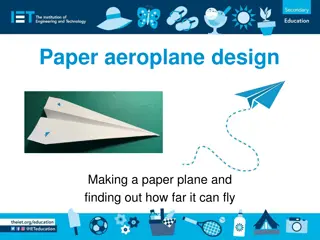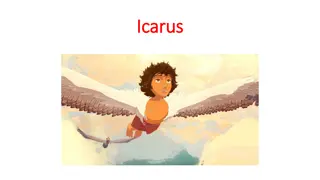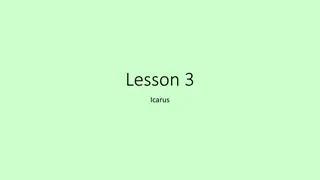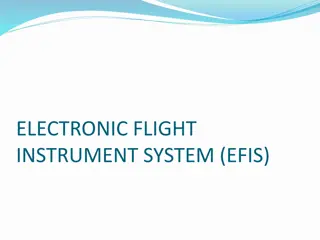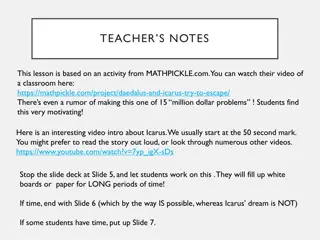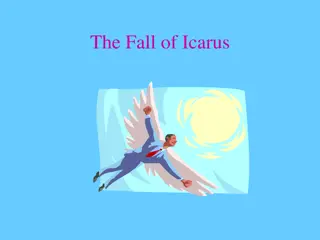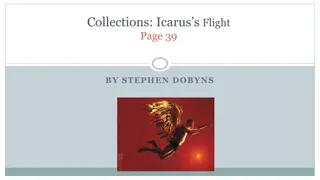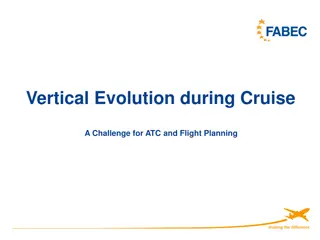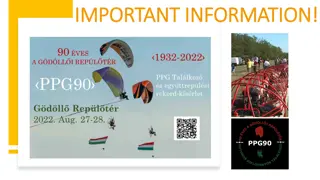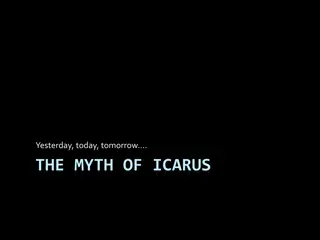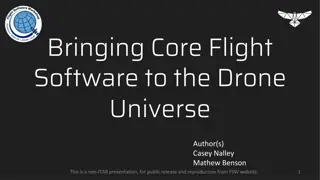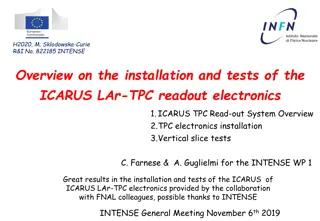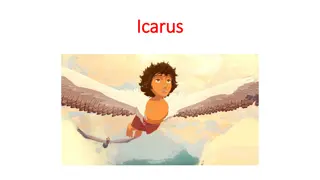Analyzing "Icarus Flight" Through SOAPSTONE Approach
Analysis of the myth of Icarus and Daedalus through the SOAPSTONE method, focusing on the poet's perspective, stylistic elements, tone, organization, and narrative style in the poem. The poet questions Icarus' actions to prompt a deeper understanding of the consequences of flying too close to the sun in pursuit of wisdom.
Download Presentation

Please find below an Image/Link to download the presentation.
The content on the website is provided AS IS for your information and personal use only. It may not be sold, licensed, or shared on other websites without obtaining consent from the author.If you encounter any issues during the download, it is possible that the publisher has removed the file from their server.
You are allowed to download the files provided on this website for personal or commercial use, subject to the condition that they are used lawfully. All files are the property of their respective owners.
The content on the website is provided AS IS for your information and personal use only. It may not be sold, licensed, or shared on other websites without obtaining consent from the author.
E N D
Presentation Transcript
SOAPSTONE for Icarus Flight
S.O.A.P. for Icaruss Flight Speaker: The poet Occasion: The narrator s analysis, discussion of the story, Icarus Flight Audience: The audience is the readers. Purpose: The purpose is to analyze the original myth: The Flight of Icarus. The poet asks rhetorical questions to push the reader to understand the same events from Icarus perspective.
S.S. for Icarus Flight Subject: The subject is Icarus myth. The title and details in the poem hint that this poem is the poet s analysis of the Icarus and Daedalus myth. Stylistic and Linguistic Elements: There is alliteration throughout the poem: flew, flutter, flight, far, forever. The use of this device helps create the imagery of Icarus flapping his wings as he tries to escape by air. There is an implied metaphor in lines 11-14, which compares Icarus to a butterfly that flutter[s] ignorantly/from petal to petal. The effect of this device is to support the poet s analysis that flying too high was the better alternative, to living a safe life without wisdom. The poem also uses rhythm, which helps the reader form a mental picture of flight and distance. Stanza 1 forms creates the idea that Icarus is flying upward. In stanza 2, the rhythm and diction start to show where Icarus flew too high and began his dissent. As stanza 2 continues, but at last in his anticipated plummeting/he grasped the confines of what had been, these lines help form the imagery of Icarus beginning to fall and reaching toward where he had been trying to stop, or stall his falling.
Tone (T.) for Icarus Flight The tone is analytical because the poet asked multiple rhetorical questions that represent how the author is trying to display his thoughts and get the audience to agree. The word choice indicates the poet is sympathetic towards Icarus. He uses diction and rhetorical questions to challenge the reader from being too critical of Icarus decision to fly too close to the sun. The poet analyzes Icarus motive for ignoring the advice and admires the boy s intellectual curiosity. Therefore, it could also be said that the poet has an admiring tone, as he believes gaining wisdom at an extreme cost (loss of life,) is better than living safely, but without wisdom.
Organization (O.) for Icarus Flight The poem is organized in five stanzas with four lines in each stanza. It is a free verse poem.* There is no set rhyme scheme. The words are arranged with similar lines lengths. The poet asks rhetorical questions throughout the poem. These questions are split up among the lines and stanzas of the poem. Thus, the physical structure of the poem helps contribute to the mental picture of Icarus Flight by pulling the reader along on this journey.
N.E. for Icarus Flight Narrative Style (N) Evidence (E) The poet tells the story by asking the reader multiple rhetorical questions. When asking a question, the voice rises. Word choice such as a great uplifting? and at the end of line 2 help contribute to the mental picture of Icarus flying. The placement punctuation (or lack thereof) at the end of the line helps to signal if there is finality to the idea, or if the meaning will change with further reading. Lines 5-6: So he flew upward/and the sun dissolved the wax and he fell. Ending line 5 without punctuation gives the reader a moment to pause and visualize Icarus flying up. The next line quickly introduces the conflict and resolution, ending abruptly. The inclusion of the period shows his final stop. The author uses formal diction. Words such as: anticipated plummeting, grasped the confines, dissent, and disintegrating are not words traditionally used in conversation. Instead of saying gravity, the poet communicates this idea by saying laws to uphold him in his downward plunge.





